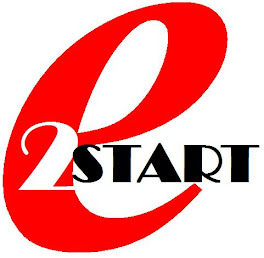MIKI - Critical Success Factors for any Business
(CopyRight 2008; Benjamin Goh, www.bensglobal.com)
The Product Focus was key in the 1900s and then, the Brand Focus in the 1950s. I strongly believe that in the 2000s, we are looking at Experience Focus. With Experience Focus, we mean "Meaning Benefits", that is to create more value by adopting a process that deliberately places meaning at the center of innovation – focusing on the roles, tools and process of identifying, designing, delivering, and maintaining meaningful experiences for our customers.
As such, the key to our success in any business would be "MIKI" (Marketing – Innovation – Knowledge Mgmt – IT) as follows:
M for Marketing
Marketing is key to any company's success in reaching out and making oneself known to the target market. We need to constantly strategise how we are going to market our solutions and products and far more important, how we are going to market the company. Its about how we are going to achieve excellence in making both our customers' experiences in doing business with us and their experiences in using our solution meaningful.
I for Innovation
Innovation is like breath to a company. Without innovation, the company will eventually run out of steam and strength or even will to move on. It is critical for us to constantly innovate our solution and product offering and even the way of doing business with us. We have to on top of market trends and political, economic, social and technological developments and changes. We need to innovate in order to survive.. its not a choice!
K for Knowledge (Chain) Management
Knowledge management is the leveraging of collective wisdom to increase responsiveness and innovation. There is a distinct difference between knowledge and its management and information and its management. Information Management consists of preplanned responses to anticipated stimuli while Knowledge Management consists of unplanned (innovative) responses to surprise stimuli. As Peter Drucker states "Knowledge has become the key economic resource and the dominate – and perhaps even the only – source of competitive advantage". As such, the only irreplaceable capital an organization possess is the knowledge and ability of its people. The productivity of that capital depends on how effectively people share their competence with those who can use it. As such, it is this long term preeminence that we need most if we are to weather changing markets.
I for Information Technology (IT)
As in any business, we need tools to achieve our business objectives and goals. We need to brainstorm what are the tools that we need to achieve the short term as well as long term objectives of the new company. It takes lots of efforts (resources) and time to learn and implement a new IT tool and its also extremely disruptive to business operations if we are to change and adopt a new tool in the future. The best time to implement a new IT tool, especially that of ERP or SCM software, is when the company is new and starting off with a brand new page. By understanding and appreciating the clear objectives of the business, we are then more equipped to source for a IT tool that will meet both our short term immediate needs as well as long term future needs. With this, I mean that we need to do it RIGHT at the START, rather than trying to make it right in the future. The IT tool must be scalable to meet our business growth needs as well as flexible enough to allow for us to adapt, adjust and align to the changing market demands. Change is an expensive process and as such, we need to ensure that we are equipped to enhance the IT tool efficiently (time) and most cost effectively. If we adopt a proprietary software, we will definitely not be able to control the above. As such, should we adopt an open source freeware that will allow us to internally respond but given the choice and option to source it out to 3rd party solution houses.
Thursday, November 5, 2009
Subscribe to:
Post Comments (Atom)

No comments:
Post a Comment